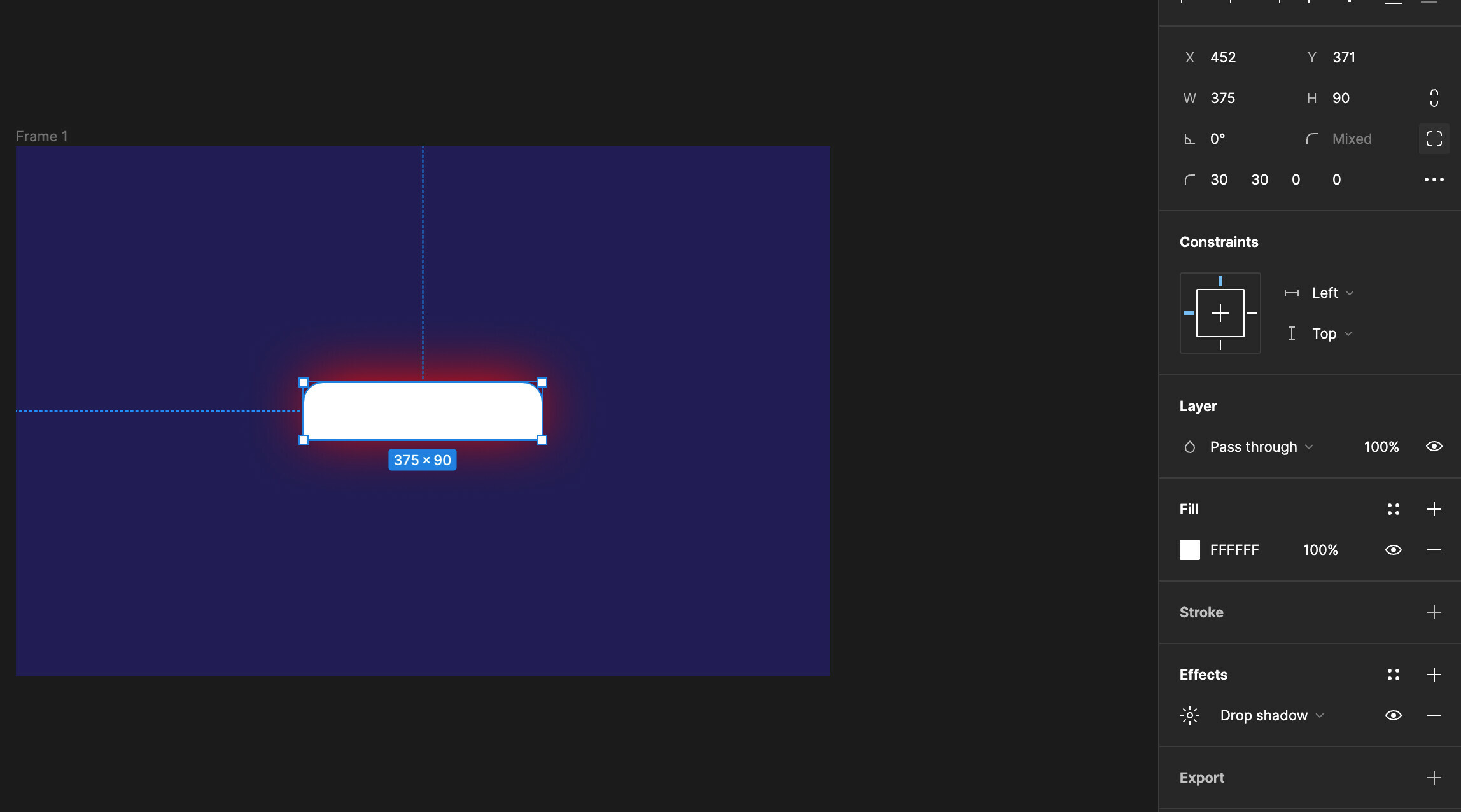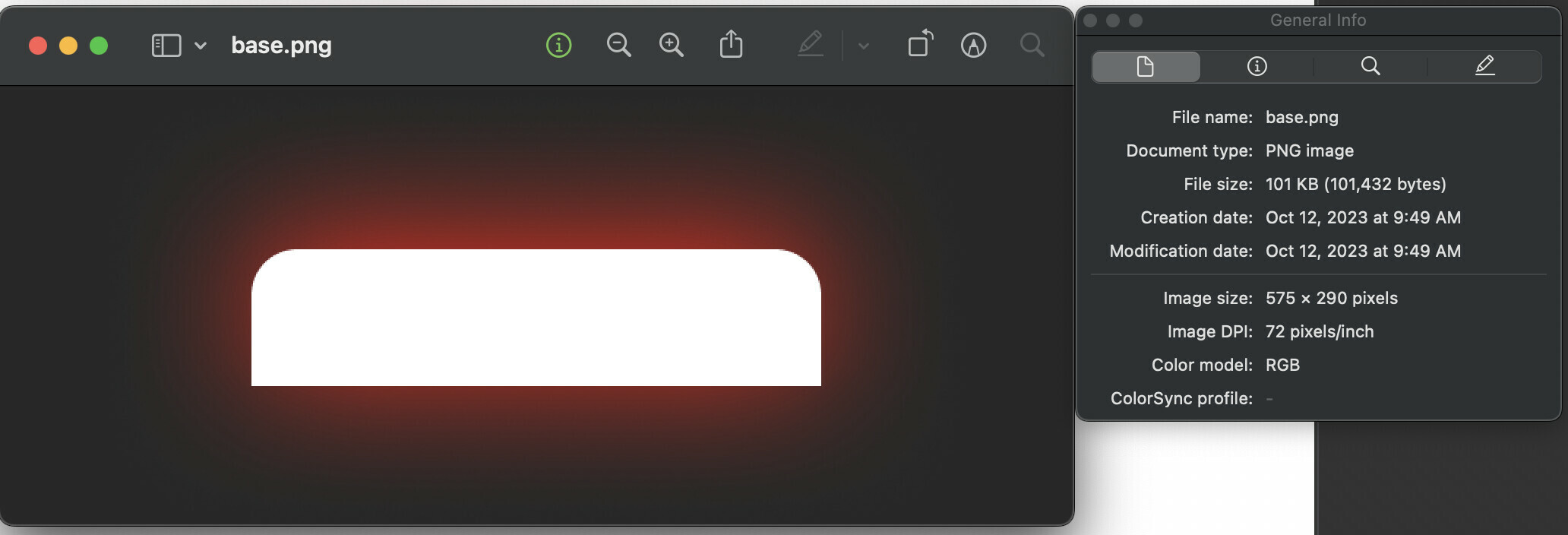Hey all,
I’m looking for some clarification on the behaviour of absoluteRenderBounds when a node is close to the border of the frame. To demonstrate, I have a simple Figma file that has a node with a drop shadow effect:
Using the GET file endpoint, I see the following when I parse this node:
absoluteBoundingBox = {x: 125.0, y: 84.0, width: 375.0, height: 90.0}
absoluteRenderBounds = {x: 25, y: -24.0, width: 575.0, height: 290.0}
These results make sense and are consistent with the image representing that node when I download it with the GET Image endpoint.
However if move the node to the top left of the frame, so that the drop shadow effect is clipped by the frame, I get this when parsing the node:
absoluteBoundingBox = {x: -353.0, y: -260.0, width: 375.0, height: 90.0}
absoluteRenderBounds = {x: -353.0, y: -260.0, width 475.0, height: 182.0}
The render bounds in this case are responding to the clipping of the frame, however the downloaded image for the node is the same as before, and remains unclipped at 575x290. I’m struggling with this inconsistency, since the render bounds and the actual image bounds are now different and I’ve lost the context to know exactly where the image is positioned inside the bounding box area. To clarify further, what I was hoping for in this case is this instead:
absoluteBoundingBox = {x: -353.0, y: -260.0, width: 375.0, height: 90.0}
absoluteRenderBounds = {x: -453.0, y: -368.0, width 575.0, height: 290.0}
I can understand that the render bounds are responding to what’s actually happening in the file. I’m wondering though if the lost context can be found somewhere else, in other properties, or perhaps if there is a setting or request parameter that I’m overlooking that can help me out. I think I can work around this by looking at the actual image size and comparing it to the render bounds and frame bounds. But this will require some painful extra math and backtracking in my code that would be nice to avoid.
Hopefully this makes sense, thanks for any advice.



